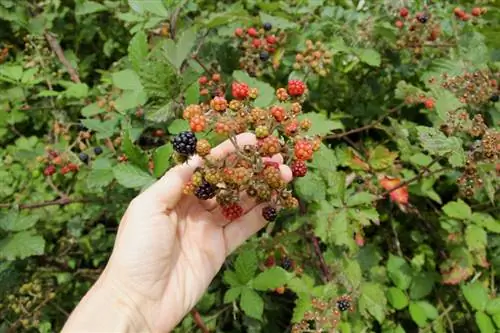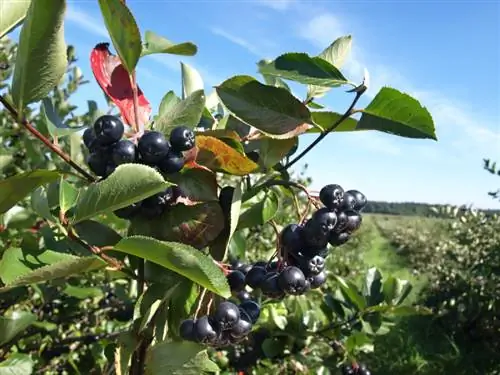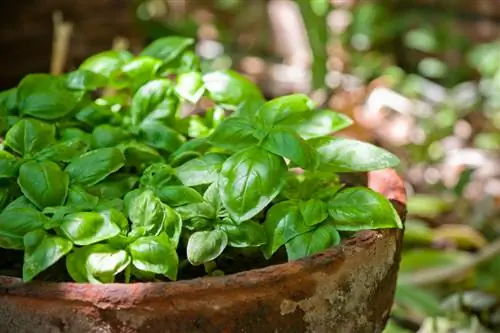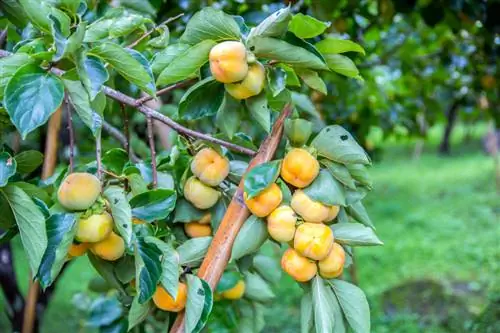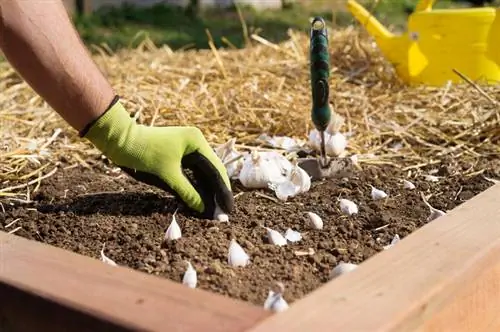- Author admin [email protected].
- Public 2023-12-16 16:46.
- Last modified 2025-01-23 11:19.
Wild blackberry plants are among the true survivors; after a certain period of root growth, they are very difficult to remove.
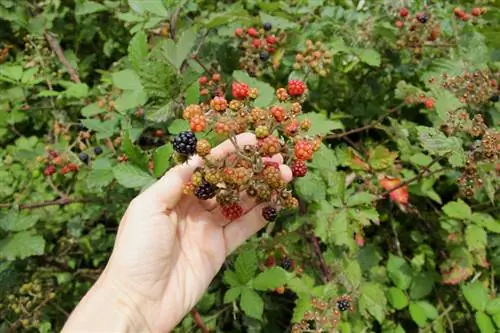
How do I care for and propagate a blackberry plant?
Blackberry plants require a sunny location and regular care, such as cutting one- and two-year-old canes, a trellis or wooden cane for stability, and fertilizing with berry fertilizer or organic alternatives. The easiest way to propagate them is through cuttings.
Blackberries for the garden
The blackberry varieties bred for the garden are also relatively strong-growing, but they are much easier to tame than their wild relatives. Green canes grow out of the ground from the strong and widely branched blackberry roots, which twist in curved shapes towards the light. Depending on the species, the individual blackberry tendrils can grow up to four meters long. In addition to thornless cultivars, there are now also blackberry plants in specialist stores that tend to grow upright.
Take care of blackberry plants properly
Upright-growing blackberry varieties usually need a wooden stick to stabilize them, but climbing varieties should ideally be brought into a neat shape using a trellis. Since blackberry plants always bear their fruit on the two-year-old canes, harvested canes should be cut off close to the ground in autumn. You can keep a better overview of a trellis if you alternate the canes on both sides every year. Fastening the rods at different heights also helps with differentiation. If you want to pick lots throughout the summer, you should fertilize the blackberry plants regularly with a special berry fertilizer (€10.00 on Amazon) or organic alternatives such as horse manure and lawn clippings.
Promote and multiply the growth of the blackberry plant
Targeted pruning can promote the vitality and fruiting of the blackberry vines. To do this, annual tendrils that are around 2.5 meters long should be cut to promote the development of side shoots. In addition, fruit mummies and moldy fruits must always be removed as quickly as possible so that other fruits are not infected. The easiest way to propagate blackberry plants is through cuttings, which are ideally cut from annual canes. If necessary, pieces with three or four leaf buds each can be cut from the old canes and placed in humus-rich growing soil.
Tips & Tricks
The blackberry plant is basically relatively undemanding. However, specimens grown in pots should be watered regularly so that they do not suffer damage during prolonged drought.

